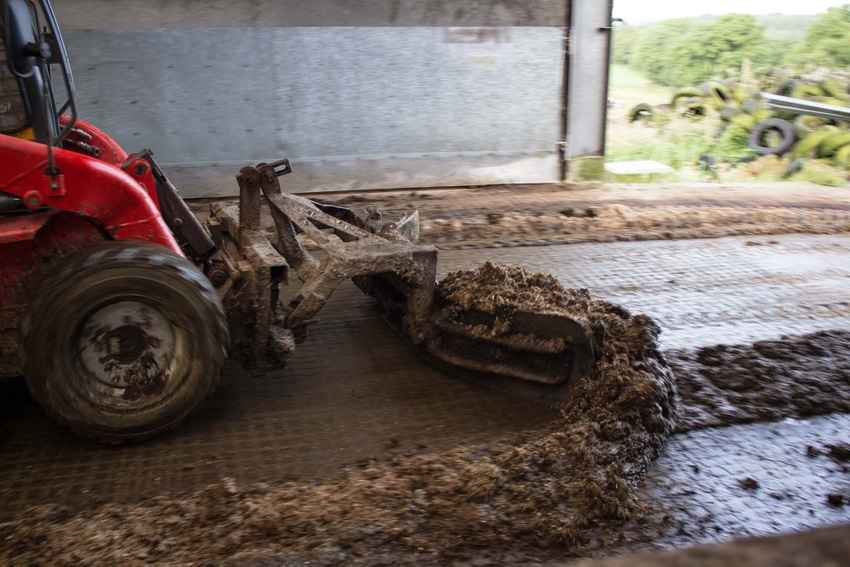April 10, 2018

A system capable of removing almost all phosphorus from stored livestock manure has been developed by a team of researchers from Penn State and USDA’s Agricultural Research Service.
Excess phosphorus, primarily in runoff from land application of manure, accounts for about 66% of impaired conditions of U.S. rivers and has created large areas of eutrophication — dead zones — in the Chesapeake Bay and the Gulf of Mexico, where aquatic life cannot survive. Nutrient pollution is one of America's most widespread, costly and challenging environmental problems, according to the Environmental Protection Agency.
The system devised by Penn State and USDA scientists — dubbed MAPHEX for MAnure PHosphorus EXtraction — involves a three-stage process, including liquid-solid separation with an auger press and centrifuge; chemical treatment with the addition of iron sulfate; and final filtration with diatomaceous earth. The machine is designed to process manure from manure-storage tanks or pits on dairy farms.
"This technology could be a game-changer if we can modify it to achieve lower operating costs," said lead Penn State researcher Alex Hristov, professor of dairy nutrition in the College of Agricultural Sciences. "The final stage uses diatomaceous earth to filter phosphorous from the fluid and that material is expensive."
Clinton Church, with USDA Agricultural Research Service's Pasture Systems and Watershed Management Research Unit, said the team is looking at recycling the diatomaceous earth.
“We are also trying to find a less expensive substitute for the filtration stage of the MAPHEX process, such as replacing the filtration stage with another centrifuge," Church said.
When tested at 150- and 2,700-cow dairies, about 98% of the phosphorus was removed from manure slurries, along with 93% of the solids. As configured, the MAPHEX system would cost approximately $750 per dairy cow per year for a dairy operation — an unrealistic cost when EPA is not imposing restrictions on phosphorus runoff from farms and no government subsidies exist to pay for such technology.
But in the future, if the government enforces clean water regulations on agriculture and if MAPHEX can be made more affordable to operate, its potential is enormous, Hristov believes.
"We anticipate that refinement of the process and beneficial uses of the solids removed from the manure — such as for plant bedding, compost and fertilizer — will improve cost-efficacy considerably," he said. "And from a stewardship point of view, some larger farmers who can afford to may want to implement a system like this."
Penn State and USDA, which were granted a joint patent on the system in 2017, are looking to license the technology, probably to a large agricultural or waste-processing company.
The MAPHEX is not just for cow manure. Church said the technology is compatible with swine manure and it probably could work with chicken manure, too, but because the latter is dry, it would have to be diluted before the process could work.
A Chesapeake Stewardship Grant from the National Fish and Wildlife Foundation and a Research Applications for Innovation grant from the College of Agricultural Sciences in 2017 supported this work.
Source: Penn State News
You May Also Like




